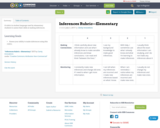
A rubric in student language used by elementary students to assess their skills at making inferences.
- Subject:
- English Language Arts
- History
- Social Science
- Material Type:
- Assessment
- Date Added:
- 07/03/2017

A rubric in student language used by elementary students to assess their skills at making inferences.
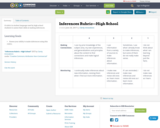
A rubric in student language used by high school students to assess their skills at making inferences.
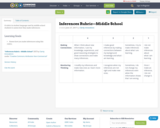
A rubric in student language used by middle school students to assess how they make inferences.
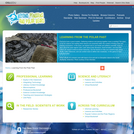
This issue of the free online magazine, Beyond Penguins and Polar Bears, explore how to use fossils and artifacts (scientific clues) to learn about the polar regions' past. Targeted literacy skills include making inferences, and using context clues to define new vocabulary.

This article highlights children's literature about fossils, dinosaurs, archaeology, and paleontology for use in the elementary classroom.
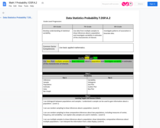
Use data from multiple samples to draw inferences about a population and investigate variability in estimates of the characteristic of interest.
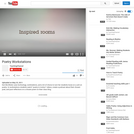
Keri McAllister uses technology, workstations, and a lot of choice to turn her students loose on a unit on poetry. In workstations students watch "poetry in motion" videos, create a podcast about their chosen poet, and post reflections on a chosen poem on their class blog.

A short quiz on CCSS.ELA-Literacy.9-10.RL.1, featuring Shelley's poem, "Ozymandias". The poem has a Dale-Chall reading difficulty level of 9-10, and a Flesch-Kincaid difficulty of 9.8.

A rubric in student language written for elementary students to self-assess the reasoning process.

This article describes the processes of making inferences and using context clues to define unknown words. Links to web sites and articles provide background knowledge and instruction for teachers and students.
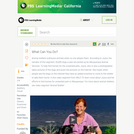
Animal shelters euthanize animals when no one adopts them. According to Joyce, the narrator of this segment, 26,000 dogs a year are picked up by Albuquerque Animal Services. To help find homes for the unwanted pets, Joyce, who is also a photographer, takes pictures of the dogs and posts the pictures on the Internet. She hopes when people see the dogs on the Internet they have an added incentive to come to the shelter to take them home. In this video segment from WILD TV, learn more about Joyce and her efforts to find homes for unwanted pets in Albuquerque. For more about animal shelters, see video segment "Animal Shelter".

Fiction, as you probably know by now, is the type of writing that an author creates, including imaginary characters and conflicts. In other words, it’s fake. Nonfiction, the type of writing you will focus on here, is factual, and addresses the real world and real things that are happening in it. More and more, however, nonfiction can be challenging to analyze as writers can slide their opinions into their writing. This becomes a challenge for the readers: What is the truth and what is merely an opinion? In this seminar, you will learn about objectivity and subjectivity, and why it’s necessary to be able to make inferences based on a writer’s claim in nonfiction reading. Don’t worry if some of those terms don’t make sense yet; you will learn about them soon enough.StandardsCC.1.2.9-10.B: Cite strong and thorough textual evidence to support analysis of what the text says explicitly as well as inferences and conclusions based on an author’s explicit assumptions and beliefs about a subject.CC.1.2.9-10.C: Apply appropriate strategies to analyze, interpret, and evaluate how an author unfolds an analysis or series of ideas or events, including the order in which the points are made, how they are introduced and developed, and the connections that are drawn between them.CC.1.2.9-10.I: Analyze seminal U.S. documents of historical and literary significance, including how they address related themes and concepts.
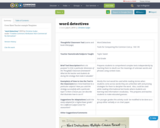
Cover Sheet
Teacher example
Templates